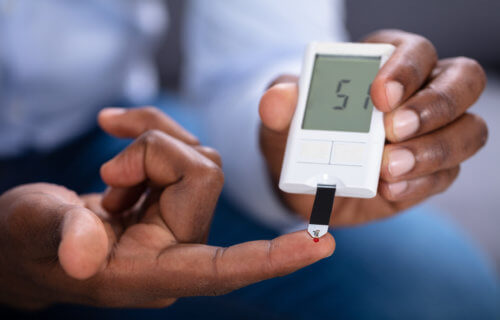ANN ARBOR, Mich. — As one pandemic begins to fade away, a new study finds another is continuing to grip the entire world. Researchers find that almost half a billion people globally have diabetes, although many don’t know they have it. The number of cases have more than quadrupled since 1980, when there were around 108 million living with the condition.
The study also shows, however, that only one in 10 are getting the level of care they need to make their lives healthier, longer, and more productive. Although researchers say diabetes was more common in affluent countries in the past, it is now more likely to affect impoverished nations in Africa, the Americas, and South East Asia.
“Diabetes continues to explode everywhere, in every country, and 80 percent of people with it live in these low and middle income countries,” says lead author Dr. David Flood from the University of Michigan in a release.
Failing to control blood sugar levels can have devastating health consequences. Diabetes triples the risk of a heart attack and leaves people 20 times more likely to undergo a leg amputation. It can also lead to stroke, kidney failure, blindness, nerve damage, and complications during pregnancy.
“We can prevent these complications with comprehensive diabetes treatment, and we need to make sure people around the world can access treatment,” Dr. Flood explains.
Diabetes is a growing problem in the developing world
Around nine in 10 patients have type 2 diabetes, which can be a result of engaging in unhealthy lifestyles. As the world’s waistlines have ballooned, with one in three now registering as overweight, so too has the number of diabetes cases.
The CDC estimates that over 34 million Americans is currently living with diabetes and 90 percent have type 2 diabetes. The latest study, appearing in the journal Lancet Healthy Longevity, pooled data on 680,000 people between 25 and 64 years-old in 55 low and middle income countries.
Researchers discovered more than 37,000 had diabetes, but over half had never received an official diagnosis. Blood samples revealed a key biomarker of elevated sugar in these patients.
Study authors add cheap medicines that reduce glucose, blood pressure, and cholesterol could combat the growing crisis. Counseling on diet, exercise, and weight can also help lower the risks from under-treated diabetes.
The study also identified major gaps in specific areas. Fewer than one in two patients with the condition are taking a blood sugar or blood pressure lowering drug. Moreover, only one in 16 people are using cholesterol-lowering medications. The team adds less than a third have access to advice on diet and exercise, which can encourage healthy habits.
Patients in poorer nations face many barriers to care
Among patients who have received a diabetes diagnosis, 85 percent are taking a medication to lower blood sugar and 57 percent have a prescription for a blood pressure drug. However, only nine percent are taking something to control their cholesterol. Additionally, a majority of diabetes patients have received diet or exercise and weight counseling. Overall, Dr. Flood says fewer than one in five are “getting the full package of evidence-based care.”
The study’s model, examining economic and demographic data about these countries, reveals the poorer the people in these nations are, the bigger the diabetes problem becomes. Nations in the Oceania region of the Pacific had the highest prevalence of diabetes – both diagnosed and undiagnosed – but the lowest rates of diabetes-related care.
Researchers did find some exceptions, such as Costa Rica. The Latin American and Caribbean regions ranked second only to Oceania in diabetes prevalence, but had much higher levels of care available.
These efforts could improve care in wealthy countries like the U.S., which does not consistently deliver good care to patients with diabetes. The team finds women, wealthier individuals, older people, and the obese are more likely to get good quality treatment. However, diabetes in people of normal weight is not uncommon in low and middle-income countries. Dr. Flood is calling for more focus on these individuals.
“The fact diabetes-related medications are available at very low cost, and individuals can reduce their risk through lifestyle changes, mean cost should not be a major barrier,” Flood concludes. “In fact, studies have shown the medications to be cost-effective, meaning the cost of their early and consistent use is outweighed by the savings on other types of care later.”
SWNS writer Mark Waghorn contributed to this report.
